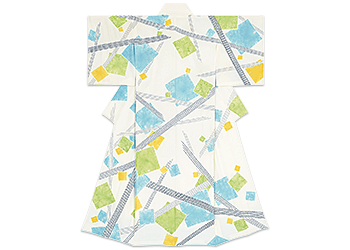Back
SHIBORI TIE-RESIST DYEING

Description
For shibori tie-resist dyeing, artisans use string to tightly tie, stitch, or fold fabric to prevent the dye from penetrating parts of the cloth. Unlike yūzen dyeing, in which the dye is applied using brushes or pastes, the designs for shibori are created by immersing the cloth in dye. The bound portions remain undyed and produce pleasing color gradations. Tie-resist dyeing is Japan’s oldest dyeing technique. Over one hundred shibori techniques continue to be practiced today, including fawn spot (kanoko shibori), stitch resist (nuishime shibori), and capped resist (bōshi shibori).
-
Reference: Nihon Kōgeikai Higashi Nihon Shibu (Japan Kōgei Association Eastern Branch), ed., Dentō kōgei-tte nani? – miru, shiru, tanoshimu gaido bukku (What Are Traditional Crafts? –A Guidebook to Seeing, Learning, and Enjoying). Unsodo, 2013.
